A scratched, rusty or dented aluminium wheel rim has a very negative impact on the car’s appearance, causing it to look untended and neglected. Aluminium is nevertheless a very pliable material when it comes to DIY processing. In this tutorial you learn everything you need to know about working on your aluminium wheel rims.
Trendy and lightweight
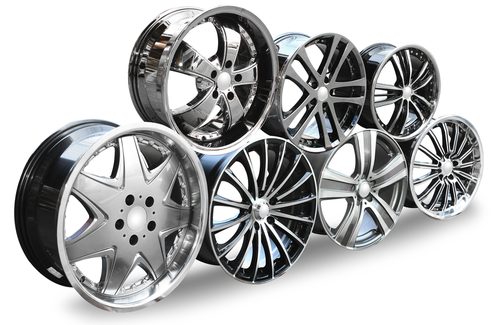 An aluminium wheel rim makes the car look dynamic and sporty. The choice of design is huge. Everything is available from common to extraordinary shapes: anything you like. Aluminium is very suitable for creating individual rims. The relatively soft material can be easily and cheaply milled in any desired shape. They can ultimately be given any colour. Lacquering with stove lacquer or powder coating are eligible options. The latter is only suitable for upgrading wheel rims under specific conditions.
An aluminium wheel rim makes the car look dynamic and sporty. The choice of design is huge. Everything is available from common to extraordinary shapes: anything you like. Aluminium is very suitable for creating individual rims. The relatively soft material can be easily and cheaply milled in any desired shape. They can ultimately be given any colour. Lacquering with stove lacquer or powder coating are eligible options. The latter is only suitable for upgrading wheel rims under specific conditions.
 Aluminium: material with many advantages
Aluminium: material with many advantages
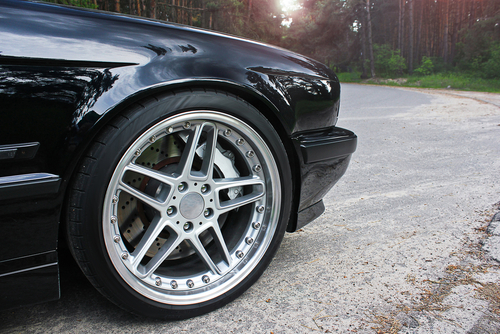 Steel wheel rims are robust and cheap solutions for making a car ready for use. They have one crucial disadvantage: they rust. Although corrosion damage can be covered with wheel caps, a car fan will feel uncomfortable about this. Therefore, most car owners prefer aluminium rims. Their advantage lies in the fact that they do not corrode as much as steel. Actually, aluminium doesn’t rust at all, although the combination of water and road salt affects the material making the rims unsightly. As a soft metal aluminium is vulnerable to kerbs, scratches and minor dents. No matter how soft the material, it can be easily ground.
Steel wheel rims are robust and cheap solutions for making a car ready for use. They have one crucial disadvantage: they rust. Although corrosion damage can be covered with wheel caps, a car fan will feel uncomfortable about this. Therefore, most car owners prefer aluminium rims. Their advantage lies in the fact that they do not corrode as much as steel. Actually, aluminium doesn’t rust at all, although the combination of water and road salt affects the material making the rims unsightly. As a soft metal aluminium is vulnerable to kerbs, scratches and minor dents. No matter how soft the material, it can be easily ground.
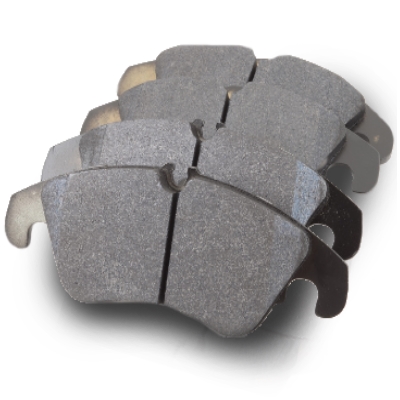
Brake pads • Top choicecheaply up from £ 6,05But now ⇒ |
 Step 1: inspecting the wheel rim
Step 1: inspecting the wheel rim
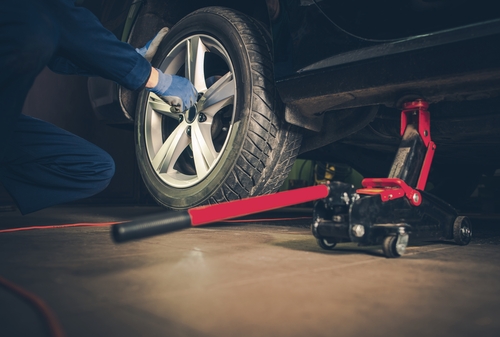 Wheel rim damage is roughly divided into 4 categories: Wheel rim damage is roughly divided into 4 categories:– Dents – Cracks and fissures – Scratches – Corrosion damageBefore working on an aluminium wheel rim, inspect the product thoroughly. Nothing can be done for dents on the edge of the wheel rim. Removing dents in aluminium wheel rims is prohibited, as it compromises the material structure of the rim. The spot where it is dented out would be considerably weakened, causing fissures or cracks. The same applies to cracks and fissures with a depth of 1 – 2 millimetres. Welding aluminium wheel rims is not allowed. A wheel rim with a crack or a deep fissure is generally fit for recycling. Scratches and corrosion damage can generally be remedied by grinding, polishing and applying a new layer. |
 Step 2: preparing the wheel rim
Step 2: preparing the wheel rim
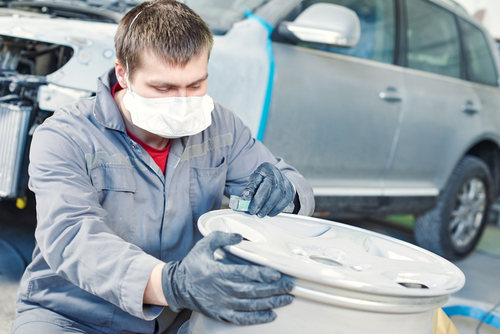 A wheel rim cannot be repaired with spot repair, but always should be fully restored. Always remove the wheel rim, allowing you to work on the damage comfortably. A wheel rim cannot be repaired with spot repair, but always should be fully restored. Always remove the wheel rim, allowing you to work on the damage comfortably.You need the following:
Remove the wheel rim and put it on the worktable. There’s no need for removing the tyre. Take care not to lose the balance weights. First, the rim is thoroughly cleaned. Be generous with warm water and cleaner. With a cleaning and polishing head for the drill this work can be considerably speeded up. The attachment units are not exactly cheap at ca. £30. After removing brake dust and other dirt from the wheel rim, repair the damage. |
 Step 3: repair the damage
Step 3: repair the damage
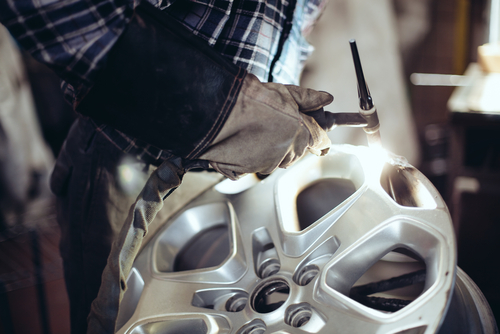 With an electric multi-tool you now grind the worst scratches and fissures. Work carefully, especially near the tyres, which should not come into contact with any grinding tool!!! Cracks and fissures can get deeper if they are not treated. By concave grinding you can reliably put a halt to this process. Please don’t forget: in case of repair, the principle: “the more the better” does not apply to grinding. The deeper you grind, the more difficult it becomes, to level the rim again afterwards. With an electric multi-tool you now grind the worst scratches and fissures. Work carefully, especially near the tyres, which should not come into contact with any grinding tool!!! Cracks and fissures can get deeper if they are not treated. By concave grinding you can reliably put a halt to this process. Please don’t forget: in case of repair, the principle: “the more the better” does not apply to grinding. The deeper you grind, the more difficult it becomes, to level the rim again afterwards. |
 Step 4: From coarse to fine
Step 4: From coarse to fine
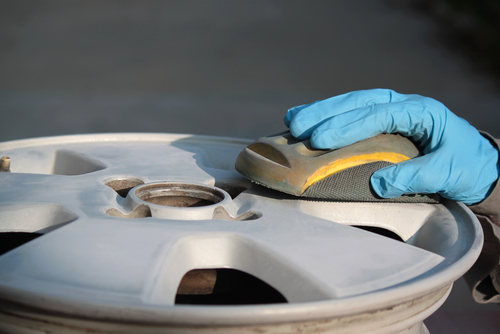 Now the wheel rim should be carefully sanded. Work from coarse to fine. The fine-grit sandpaper will eventually smooth out the scratch and make it disappear. Now the wheel rim should be carefully sanded. Work from coarse to fine. The fine-grit sandpaper will eventually smooth out the scratch and make it disappear.If you want to seal the rim with varnish, you can use no filler. Even though it has the same colour as the rim, a filled spot will show. In this case the only option is manually sanding until no scratches can be seen. After sanding the wheel rim is thoroughly polished with help of the polishing disc. If you wish to apply coating, you can fill the deeper sanded spots and sand them over afterwards. Work according to the instruction provided along with the filler. |
 Step 5: finishing
Step 5: finishing
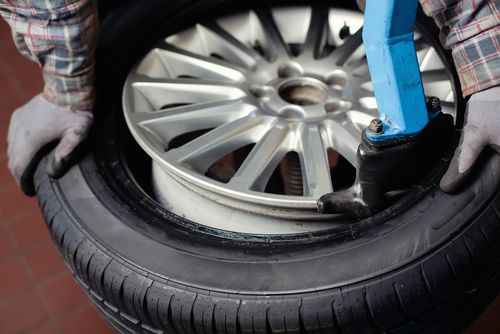 If you want to paint the wheel rim, start with taping off the tyre to avoid the need for cleaning it afterwards, the result will look more professional. Prior to painting, clean the wheel rim thoroughly with silicon spray. Then, prime it, paint it and seal it with varnish after hardening – done. If you want to paint the wheel rim, start with taping off the tyre to avoid the need for cleaning it afterwards, the result will look more professional. Prior to painting, clean the wheel rim thoroughly with silicon spray. Then, prime it, paint it and seal it with varnish after hardening – done. As an alternative to painting you can also powder-coat the wheel rim, although this is only recommended in certain circumstances. Powder-coating is considerably more expensive than painting and it requires more work, as the tyre must be removed. On the other hand, powder coating looks very professional. It covers totally the wheel rim, making any damage invisible. Powder-coated wheel rims always makes buyers of used cars suspicious. Therefore it is only recommended if you want to keep on using the car yourself. Never buy a car with powder-coated wheel rims. You don’t know how they look underneath. As an alternative to painting you can also powder-coat the wheel rim, although this is only recommended in certain circumstances. Powder-coating is considerably more expensive than painting and it requires more work, as the tyre must be removed. On the other hand, powder coating looks very professional. It covers totally the wheel rim, making any damage invisible. Powder-coated wheel rims always makes buyers of used cars suspicious. Therefore it is only recommended if you want to keep on using the car yourself. Never buy a car with powder-coated wheel rims. You don’t know how they look underneath. |
 Tips for quick readers:
Tips for quick readers:
| – Do not dent out or weld aluminium wheel rims – Damage of 2 mm or deeper can no longer be repaired – Sand fissures and cracks concavely and evenly – Powder-coating of aluminium wheel rims only for own use. |
Foto: baranq, trossofoto, Dmitry Kalinovsky, My Life Graphic, welcomia, Roman.S-Photographer / shutterstock.com




 (9 votes, average: 3.67 out of 5)
(9 votes, average: 3.67 out of 5)







